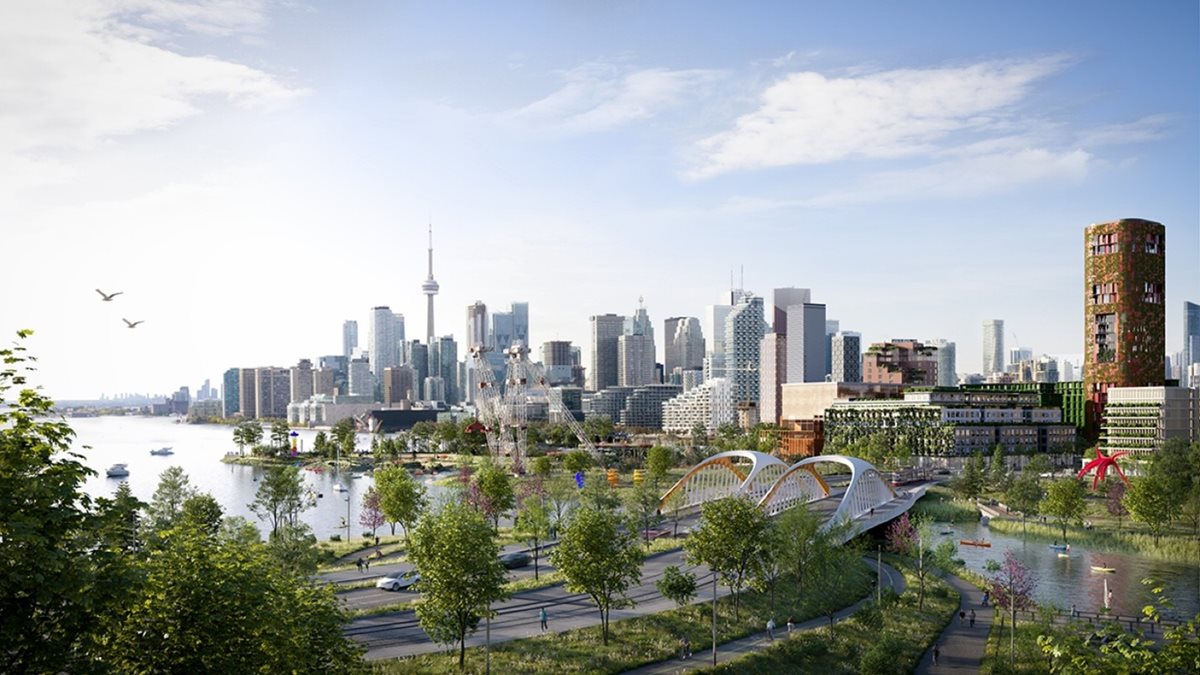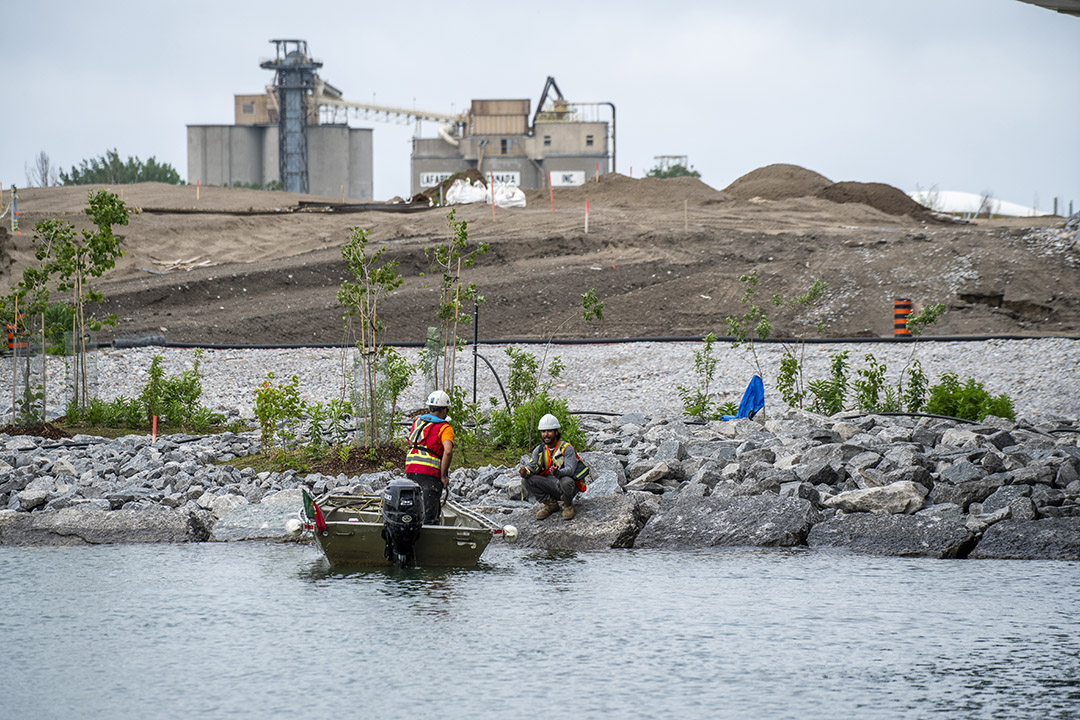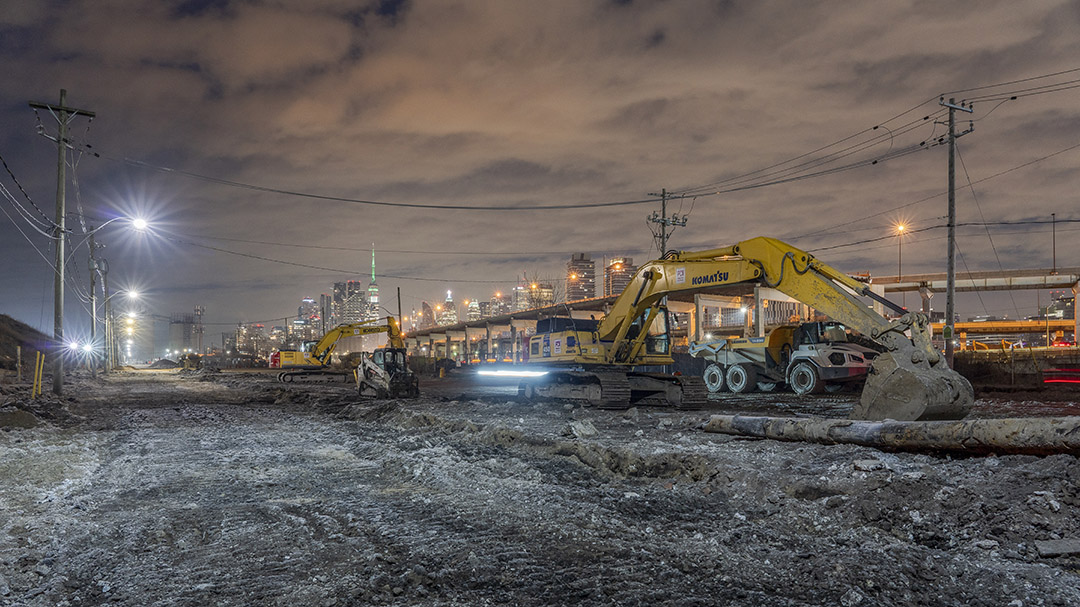
The "Once-in-a-Lifetime" Engineering Marvel
When Brian Samulewitsch, Project Director at EllisDon Civil, talks about the Port Lands Flood Protection Project, there's pride mixed with amazement in his voice. "Not many times will you be able to experience building a kilometre and a half new river within a city," he explains. "That doesn't happen every day. Very unique and something that we are very proud to be a part of."
Eight years ago, Toronto's Port Lands was an industrial wasteland with contaminated soil everywhere. Not exactly prime real estate material.
Today, the area is ready to become part of a developing waterfront community of 100,000 people, with over 200 hectares of land unlocked for development.
The EllisDon team didn't just move a little dirt around – they excavated 1.4 million cubic metres of heavily contaminated soil.
To put that in perspective: That's enough contaminated earth to fill the Rogers Centre!
Complicating matters, this contaminated soil wasn’t just hauled away, there was a mandate to clean and reuse 75-80% of it right on site. To handle this, the team cleaned the bulk of soils on-site by bio remediation which involved adding microbs and aeiraling the soil over 8-12 week before re-use
“We had just about everything going on in this job,” said Samulewitsch. “Bridges from the Netherlands, a custom water treatment plant, excavation deeper than ten metres below the water table, it was the kind of challenge you only see once in your career.”
Building a new river is a monumental task no matter where it happens, but what made this even more remarkable was that this team was tasked with building a river right beside a lake. The risk of the new riverbed flooding was extremely high.
The solution was ingenious: Create a massive underground "bathtub" by installing deep cutoff walls that go all the way down to bedrock. This sealed container allowed crews to work in dry conditions while keeping all that lake water at bay.
The result? A naturalized river channel that can handle stormwater equivalent to two-thirds of Niagara Falls.
The Swiss Watch Underground

Julius Gombos from Waterfront Toronto calls the underground infrastructure of this project a "Swiss watch."
While everyone will see new parks and riverbanks, the real genius is invisible: a meticulously engineered network of floodplains, utilities, and structural supports that make it safe to build vertically on what was once unstable swampland.
To make it happen, Waterfront Toronto brought everyone to the table from day one: the City, Toronto Hydro — all the key players.
“You can’t make a good landing with a bad approach,” said Gombos. “From the beginning, we knew we had to plan differently. That meant real coordination, not just between contractors, but with utilities, regulators, and government at every level.”
When Trust Drives Results

Despite drilling more than 2,500 boreholes to assess soil conditions, the ground beneath the Port Lands remained deeply unpredictable. Contaminants had migrated through unstable peat over decades, and the geotechnical models proved inaccurate time and again.
That level of uncertainty could have led to costly delays, finger-pointing, and legal disputes. But from the outset, Waterfront Toronto and EllisDon approached this work differently.
Rather than shifting risk onto the contractor, Waterfront Toronto retained it and invited EllisDon into the process early through a construction management model that prioritized collaboration over confrontation. That trust became the foundation for real-time problem solving when issues inevitably emerged.
The payoff was significant. Even with unprecedented challenges like COVID-19, global supply chain disruptions, and rising construction costs, the project stayed close to its original budget and schedule.
More Than Just Flood Protection
For Gombos, this was never just about managing water. This is about reimagining how we live in cities.
"This really is something of substance that will change the city in the long term," he explains. "It gives us an opportunity to build a new type of housing, a new type of environment where we can push the envelope relative to quality of life and quality of space."
By 2031, the new Ookwemin Minising (formerly known as Villiers Island) will be the home for new market and affordable housing in mid- and high-rise developments and public amenities.
More than 100 EllisDon team members and thousands of tradespeople have poured their skills into this project since 2017. As Samulewitsch says of the team: "I get the sense this is something they're proud to be a part of. They want to be here at the end. They want to see it through."
Honouring Indigenous Partnerships
From the outset, Waterfront Toronto partnered with the Mississaugas of the Credit First Nation.
Waterfront Toronto and the City of Toronto engaged other First Nation and Métis communities to help shape the project. Their guidance influenced naming, wayfinding, and design: embedding Indigenous values into the land’s transformation.
This allows for another layer of meaning for the project: this isn’t just flood protection, it restores a needed cultural presence in a place where it had been absent.
What’s Next?
Until now, most of this transformation has been happening out of sight. That changes this summer when the new parks and pathways open to the public.
For the first time, Torontonians will walk along a river that literally didn't exist a decade ago. They'll experience green space that anchors what will soon become one of the city's most vibrant communities.
After eight years of construction zones and "trust us, it'll be amazing," the public finally gets to see what all the fuss was about.


